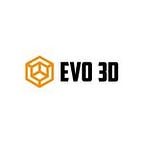The world of 3D printing changes rapidly and offers designers, engineers, and even hobbyists’ opportunities for engagement. Among the different 3D printing technologies, stereolithography (SLA) has an edge due to its incredible ability to produce detailed and high-resolution 3D prints. This blog is about SLA 3D printers, which may be considered the future of 3D printing.
Understanding the Technique of SLA
SLA 3D printing works by hardening liquid resin layer-by-layer under a UV light beam. A digital 3D model is cut into thin horizontal layers, and on each layer, a fine laser beam solidifies the resin selectively, thus forming it into shape. Each time, the platform that carries the object being printed descends slightly so that the subsequent layers can be cured on top of each other.
It is only through this careful process SLA printers can reach remarkable resolutions, which often range in size from 25 microns or thinner, equal to the width of human hair.
The Benefits of SLA Printing
SLA Printers Possess Several Advantages Because They Can Create High-resolution Images.
● Intricate Details: With high accuracy, SLA is unmatched when it comes to printing complex geometries and fine features. It is ideal for applications such as jewellery making, dental prosthetics, or prototypes that require intricate details.
● Smooth Surface Finish: SLA prints, unlike filament-based methods, have no visible layer lines on their surface finish. Post-processing becomes easier since time on unnecessary steps.
● Range of Materials: Different resins can be used in SLA printers, as each has its characteristics. These include clear resins, which make transparent parts possible, biocompatible ones for medical applications, and engineering resins with superior strength and heat resistance.
● Dimensional Accuracy: The excellent dimensional accuracy of SLA printing can achieve exact tolerances for applications. Thus, this technology is best suited for functional prototypes or end-use parts that rely heavily on dimensional accuracy.
Uses of 3D Printing in SLA
The industrial big 3D printer has unique advantages over different sectors, namely:
● Product Design and Prototyping: The SLA printers can create highly detailed prototypes and functional designs, giving designers a glimpse into how the final product would look before going into mass production.
● Jewellery Making: It changes jewellery-making by supporting fine-tuned and personalized pieces with a glossy finish, perfect for creating exclusive pieces.
● Dentistry: SLA printers can make dental restorations, such as crowns, bridges, and dentures, that are both aesthetically pleasing and functional.
● Healthcare: Because it can print biocompatible resins, SLA can produce medical models and prototypes for surgical planning and prosthetics.
● Architecture and Engineering: Precise scaled-down replicas of buildings with all their components are made by architects and engineers using SLA printers.
The Future of SLA Printing
Though SLA printing is advantageous, there’s always room to be better. Here’s a preview of the future of SLA technology:
● Faster Printing Speeds: The ongoing studies can gear up the printing process while maintaining detail. It would lead to an improved SLA printer in terms of efficiency and productivity.
● Bioprinting Advancements: Biocompatible resins with better properties have the potential for developing bioprinting materials used in creating organs and tissues in medicine.
● Multi-Material Printing: The capability of printing with various resins in one build lets people create objects with different performances or functionalities.
● Reduced Resin Costs: As the adoption level for SLA technology increases, resin prices are expected to go down, thereby making them affordable for many users.
SLA 3D printing is one of a few high-resolution 3D printing technologies. It finishes smoothly with intricate details and exact dimensions, useful in various industries. In this case, these printers continue to advance speed, materials, and multi-material capabilities, thus pushing design and innovation boundaries within the increasingly dynamic world of three-dimensional printing.
